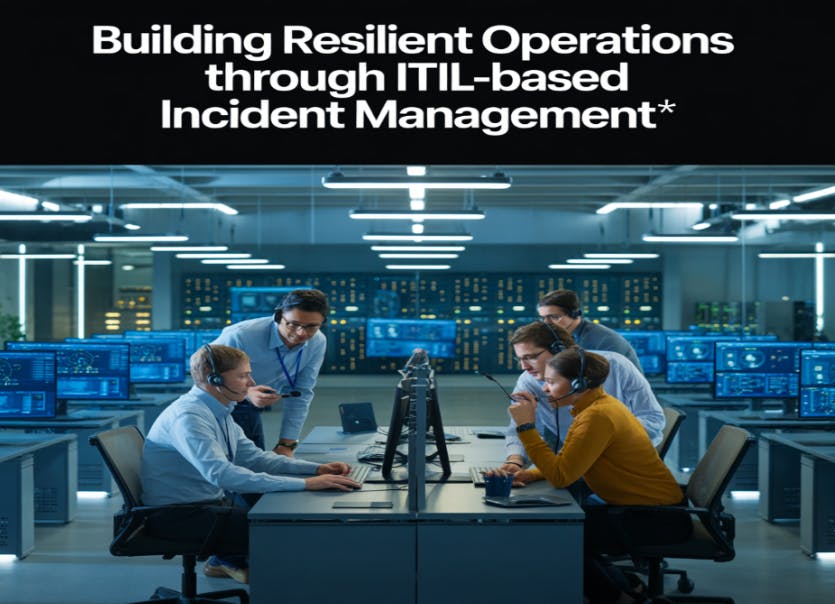The adoption of cloud computing has redefined how organizations operate their digital systems. Traditional frameworks, such as ITIL, were designed for static, centralized infrastructures; however, the realities of distributed, rapidly evolving cloud environments demand fresh approaches. ITIL version 4 introduces the Service Value System, blending governance with modern methodologies such as Agile and DevOps. This evolution transforms IT service management from rigid processes into flexible value-driven systems that align with the fast-moving dynamics of cloud ecosystems.
New Realities in Cloud Environments
Cloud platforms bring immense advantages elastic scalability, self-service resource allocation, and distributed operations, but these also create unique challenges for incident response. Temporary resources, blurred ownership boundaries between providers and customers, and high-speed deployment cycles complicate incident detection and recovery. In response, ITIL 4 emphasizes adaptability: governance that supports automation, resilience, and real-time service monitoring rather than relying on static documentation.
Smarter Detection Through Modern Tools
Innovation in incident detection is one of the most significant advances in ITIL-based cloud management. Modern observability tools like AWS CloudWatch, New Relic, DataDog, and Splunk move beyond fixed thresholds, using AI-driven anomaly detection and distributed tracing to reveal subtle issues across microservices. PagerDuty and webhooks then bridge monitoring and human response, ensuring the right experts are alerted instantly.
Observability has become the linchpin of incident management. By capturing failures, alerts, and early warnings across infrastructure, applications, and business KPIs, organizations can contextualize anomalies and reduce blind spots. This layered approach ensures that small signals are not missed and system-wide issues are quickly identified before they escalate.
Self-healing mechanisms such as automated runbooks even initiate corrective actions without human intervention, reducing downtime and mean time to repair (MTTR).
Dynamic Categorization and Ownership
Where earlier frameworks relied on rigid categories, ITIL 4 introduces flexible classification centered on business impact. Metrics like Time to Own (TTO) highlight how quickly responsibility is accepted by the correct team, reducing delays caused by incident handoffs. Prioritization now considers multiple dimensions: urgency, scope, reputational risk, and revenue impact. Categorization can adapt to cloud-specific services like compute, storage, or containers, making responses more aligned with real operational needs.
Collaborative and Accelerated Investigations
Incident diagnosis has been transformed by ITIL 4’s emphasis on collaboration and automation. Centralized log aggregation, knowledge error databases (KEDB), and AI-driven pattern matching accelerate root cause analysis. Instead of siloed troubleshooting, teams now work in virtual “war rooms,” pooling expertise across development, operations, and business roles. Automated playbooks, service dependency maps, and infrastructure-as-code version tracking further streamline investigation, enabling 43% faster resolution and 37% higher first-time root cause accuracy compared to earlier approaches.
At the same time, communication during critical incidents has emerged as a key challenge. Beyond technical fixes, stakeholders, including leadership and customers, require timely, transparent updates. Structured communication protocols, such as real-time dashboards, executive summaries, and customer-facing status updates, ensure confidence and trust are maintained during high-severity events.
Resolution Through Automation and Recovery Strategies
Modern recovery strategies embrace cloud-native strengths. Immutable infrastructure allows teams to replace faulty components with predefined, tested configurations rather than repair them directly. Automated rollbacks and traffic shifting reduce risk during remediation, while self-healing systems autonomously restore services before users even detect issues. These innovations embody ITIL 4’s focus on automation and value creation, ensuring stability even amid rapid system changes.
Embedding Continuous Improvement
Post-incident practices under ITIL 4 connect short-term fixes to long-term resilience. Structured reviews, root cause analyses, and permanent solution design turn each incident into an opportunity for system-wide improvement. This adaptive governance is reinforced by no-blame reviews and ongoing validation of permanent solutions. Together, they ensure organizations move from reactive responses toward proactive resilience.
A crucial dimension here is SLA performance. The consequences of missing Service Level Agreements (SLAs) extend beyond technical metrics:
- Financial penalties, such as fines or mandatory service credits.
- Reputational damage, eroding customer trust, and competitive advantage.
- Operational disruption creates workflow delays for both providers and clients.
By embedding SLA monitoring into observability practices, organizations can connect technical performance directly to business outcomes.
Best Practices for the Cloud Era
According to the ITIL Cloud Incident Management Excellence Framework, successful adoption rests on four pillars:
- Automation and Integration – Automated workflows reduce human error and accelerate responses.
- Observability – Multi-layered monitoring links technical performance to business outcomes and SLA compliance.
- Adaptive Governance – Governance frameworks evolve toward results-focused accountability.
- Cultural Transformation – Cross-functional training ensures teams respond effectively across disciplines.
In conclusion, the adaptation of ITIL 4 to cloud environments demonstrates measurable impact. Organizations have seen a 47% reduction in MTTR, 63% improvement in first-time resolution, and 38% fewer high-severity incidents since 2019. These improvements stem from embracing automation, observability, collaborative governance, and proactive communication.
As highlighted by Prakash Dhanabal, when applied with agility, ITIL 4 remains not only relevant but indispensable for building resilient digital operations. By uniting automation, observability, communication, and adaptive governance, businesses can sustain critical services while advancing efficiency and customer confidence.


